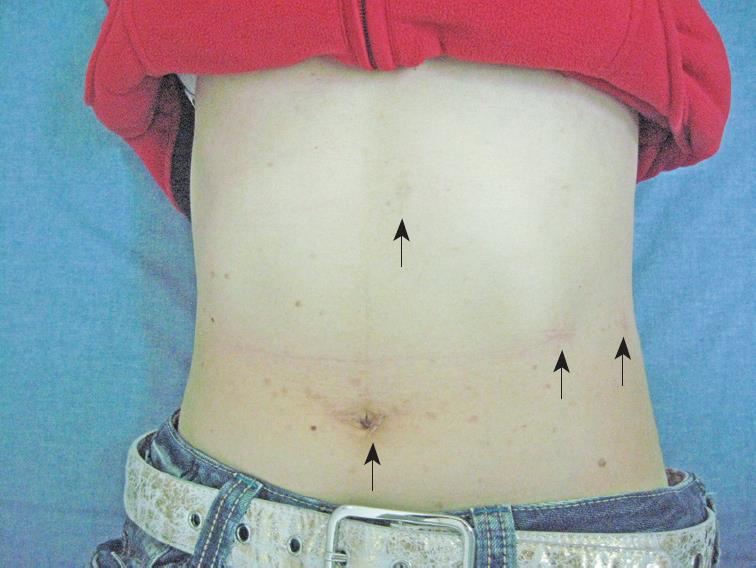Copyright
©2009 The WJG Press and Baishideng.
World J Gastroenterol. Jun 21, 2009; 15(23): 2923-2926
Published online Jun 21, 2009. doi: 10.3748/wjg.15.2923
Published online Jun 21, 2009. doi: 10.3748/wjg.15.2923
Figure 1 An abdominal computed tomography scan showing a 9 cm well-defined cystic lesion, which abuts the spleen, kidney and pancreas tail.
Figure 2 Magnetic resonance imaging of the abdomen.
A low signal intensity cystic mass on the T1-weighted image (A) and a high signal intensity cystic mass on the T2-weighted image (B).
Figure 3 Placement of the laparoscopic trocar and operative ports.
A 12-mm trocar was placed in the periumbilical region, and three other operating ports were placed in the abdomen (arrows). The photograph was taken eight months after surgery.
Figure 4 Gross appearance of the 6 cm × 3 cm × 3 cm adrenal cystic lesions.
The cystic lesion adheres to adrenal gland tissue.
Figure 5 Histopathology showing an adrenal pseudocyst (a) and adrenal tissue remnants on the upper aspect (b).
The cyst wall is composed of a thick layer of hyalinized connective tissue without an epithelial or endothelial lining (a). HE staining (Original magnification, × 40).
- Citation: Kim BS, Joo SH, Choi SI, Song JY. Laparoscopic resection of an adrenal pseudocyst mimicking a retroperitoneal mucinous cystic neoplasm. World J Gastroenterol 2009; 15(23): 2923-2926
- URL: https://www.wjgnet.com/1007-9327/full/v15/i23/2923.htm
- DOI: https://dx.doi.org/10.3748/wjg.15.2923













